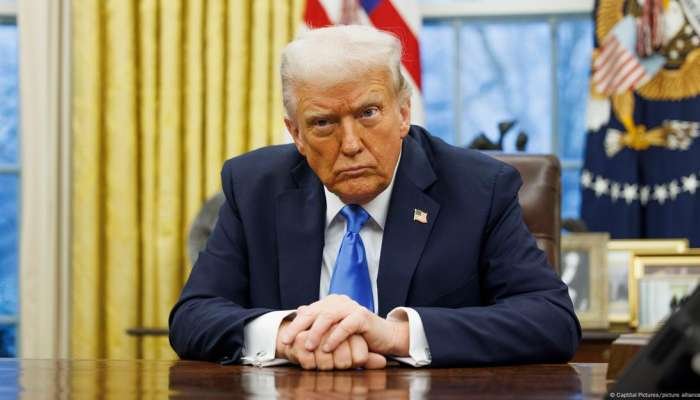
Washington, D.C.: Former U.S. President Donald Trump has instructed his administration to develop a policy of reciprocal tariffs on imports to the United States. This move aligns with his long-standing stance on trade fairness, aiming to impose tariffs equivalent to those levied on U.S. exports by other countries.
What Are Reciprocal Tariffs? Reciprocal tariffs mean that the U.S. will impose the same tariff rates on imports from other nations as they impose on American goods. Trump announced, “For fairness, I will charge a reciprocal tariff. Whatever countries charge the U.S., we will charge them—no more, no less.”
This policy follows previous tariff implementations, including a 10% levy on Chinese imports and proposed tariffs on steel and aluminum. Additionally, Trump has threatened a 25% tariff on goods from Canada and Mexico, although negotiations have delayed its implementation.
Why Is Trump Advocating for Reciprocal Tariffs? Trump argues that the U.S. has been at a disadvantage due to foreign trade policies that impose higher tariffs on American goods. For example, according to data from Global Trade Alert, India applies tariffs that are generally 5% to 20% higher than U.S. tariffs on comparable imports. Trump believes that by imposing reciprocal tariffs, he can pressure other nations to lower their duties and boost the U.S. economy by reducing trade deficits.
Supporters of this policy argue that it aligns with Trump’s “America First” economic strategy, encouraging domestic production and limiting reliance on foreign imports. However, some economists caution that reciprocal tariffs could disrupt global trade relationships and increase consumer prices in the U.S.
How Will the Plan Be Implemented? Trump’s directive gives federal agencies 180 days to identify countries with higher tariff rates than the U.S. and propose matching tariffs accordingly. However, the policy could be implemented sooner, with Trump’s nominee for Commerce Secretary, Howard Lutnick, suggesting it could take effect by April 2.
Priority will be given to countries with significant trade surpluses against the U.S. The new tariffs may be justified based on national security concerns, unfair trade practices, or emergency economic provisions.
Potential Consequences of Reciprocal Tariffs While the policy aims to protect American industries, critics warn of potential drawbacks. Increasing tariffs on imports could lead to higher consumer prices, fueling inflation. Following the post-pandemic economic recovery, U.S. inflation had stabilized, but January’s 3% consumer price index increase has raised concerns about further price surges.
According to S&P Global Ratings, tariffs on China, Canada, and Mexico could cause a one-time rise of up to 0.7% in consumer prices. Additionally, retaliatory tariffs from trading partners could negatively impact American exporters, with the European Union and China already preparing countermeasures.
How Other Nations May Respond The introduction of reciprocal tariffs could spark global trade tensions, prompting affected nations to seek negotiations to avoid additional levies. For instance, India has proactively reduced tariffs on several goods in response to U.S. trade concerns. Similarly, Taiwanese President Lai Ching-te has called for a mutually beneficial agreement with Washington to protect Taiwan’s economic interests.
The European Union has expressed disapproval of the policy, calling it “a step in the wrong direction.” EU officials have indicated a willingness to lower automobile tariffs to match U.S. levels and increase imports of American liquefied natural gas (LNG) and military equipment to prevent trade restrictions.
While the World Trade Organization (WTO) generally mandates uniform tariffs among its 160+ member countries, exceptions exist for trade agreements and customs unions. Trump’s policy could shift international trade dynamics by encouraging country-specific tariff negotiations, challenging long-standing trade norms.
Conclusion The introduction of reciprocal tariffs marks a significant shift in U.S. trade policy. While aimed at reducing trade imbalances and promoting American economic interests, it also raises concerns about inflation, global trade disruptions, and potential retaliatory measures. As negotiations unfold, the policy’s true impact on both the U.S. and international markets remains to be seen.
For all the latest news from Oman and GCC, follow us on Instagram, like us on Facebook & subscribe to our YouTube Channel, which is updated daily.





